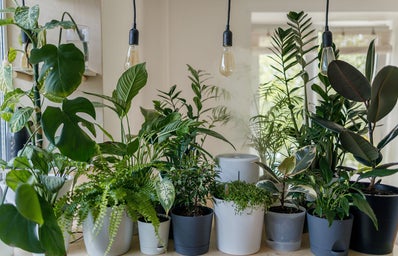Plants are pretty to look at, but why are they important? Here are five reasons you should consider developing a green thumb.
good for mental health
The Mayo Clinic Health System says that gardening has been shown to lower stress and anxiety levels. Plants can also serve as a reusable resource if you choose to plant food like basil, lettuce, blueberries, tomatoes, etc. It is a repetitive act; one must water, dig and remove certain parts of the plant to care for it. In this respect, it can be therapeutic to perform this routine.
Most plants require sunlight. Whether you’re caring for a potted plant inside or gardening outside, caring for your plants gives you the opportunity to increase your vitamin D levels. The Harvard School of Public Health says that more vitamin D can help boost the immune system and promote bone growth.
Learn About Native Species
If you want to grow a particular plant, ensure it is a species native to your area. For example, common native species in Arizona include the saguaro cactus, the ocotillo flower, and the desert marigold flower. These native plants remove carbon from the air and do not need large amounts of water to thrive. They also provide food and shelter for local wildlife.
On the other hand, invasive species threaten native plants in your area. They spread quickly, killing native plants that surround the area. This destroys resources wildlife depends upon. For instance, common invasive species in Arizona include the stink net flower, fountain grass, and buffelgrass. Learning about native and invasive plant species gives you the opportunity to understand your environment better.
Planting is for Everyone
Make sure to take baby steps. It is wise to start with one potted plant before moving to more involved plants. Healthline mentions that some low-maintenance plants include aloe vera, the snake plant, succulents, and the ZZ plant. Find one you think is pretty and try caring for it. You might surprise yourself with your ability to keep it alive and well.
better the environment
Plants have the ability to remove pollutants from the air and soil. This improves air quality, which is especially important within dense cities. Plants release oxygen and store CO2 (carbon dioxide) in their stems, leaves, and roots. This creates the air we breathe and helps keep it clean. By storing CO2, plants keep the climate stable. When a bunch of plants are cut down or removed, it releases carbon. This raises CO2 emission levels, which can negatively affect our climate. Having your own plants improves the air quality of the space you live in and is a step towards caring for the environment.
get creative
Potted plants do not have to be some stagnant thing that sits by the windowsill. Try out different crafts that can add some spice to your plants. If you have a succulent, you could crochet a succulent holder to hang from the ceiling. You can put some googly eyes on the pot of a plant to give it some personality. Try painting the pot or giving your plant a nametag. If the pot is too boring, ditch it. You can transfer plants to unconventional vessels like teacups, mason jars, or even lightbulbs.
These tips serve as a broad view into the world of planting! If you want to get your own plant growing, start by doing research on low-maintenance plants native to your area. I’m “rooting” for you!


